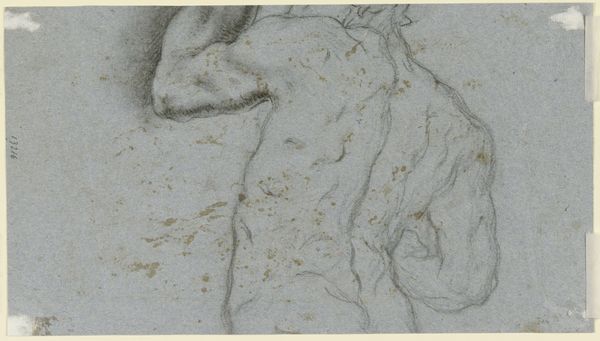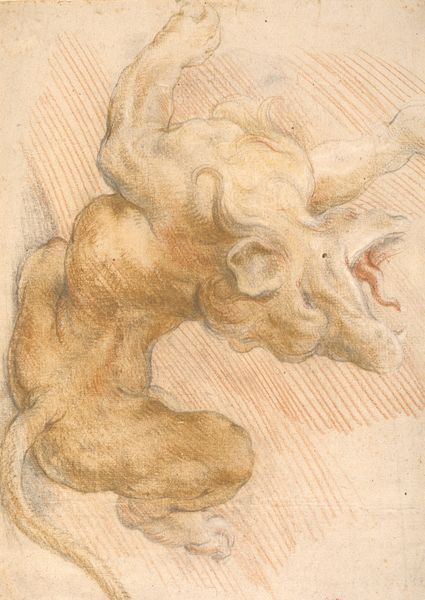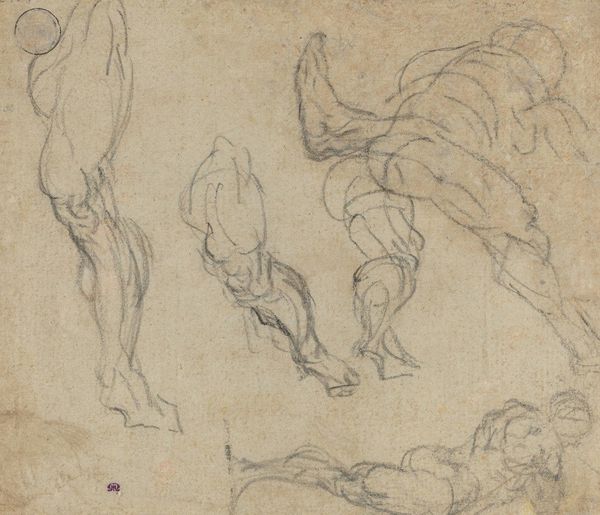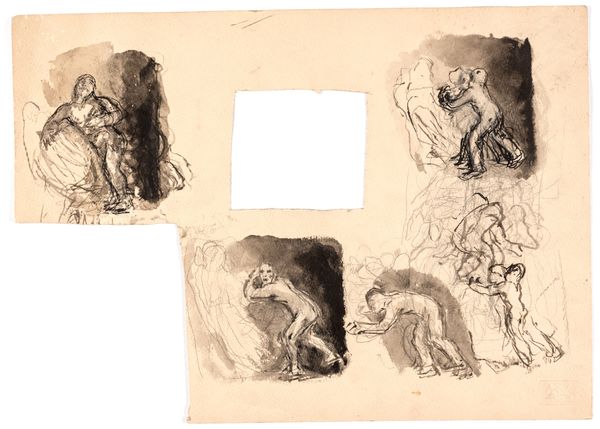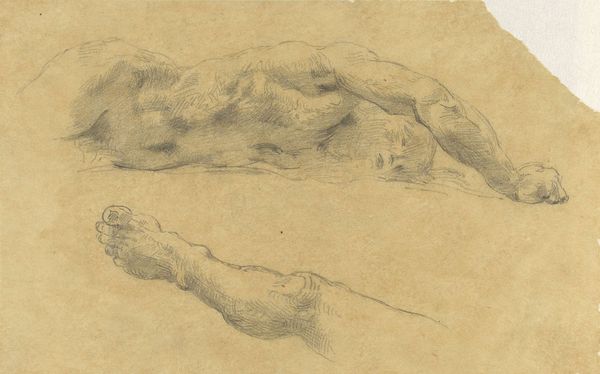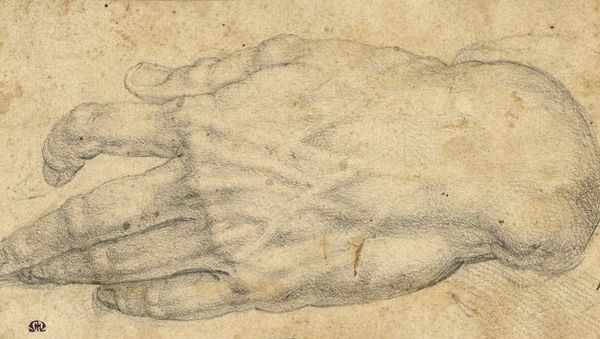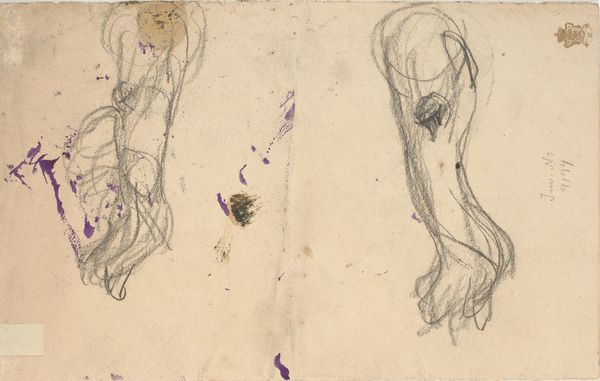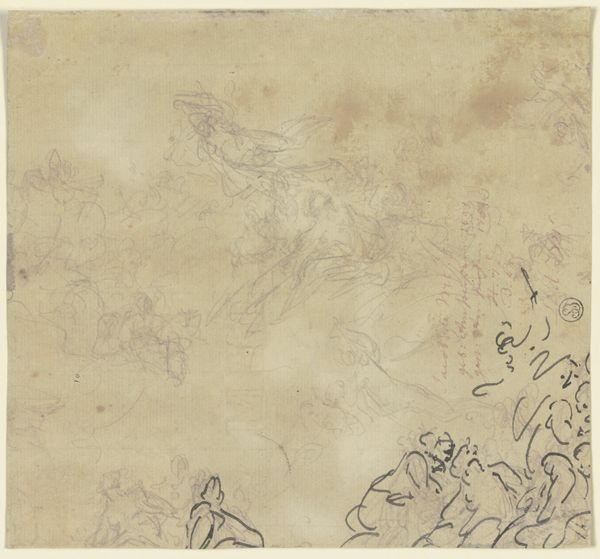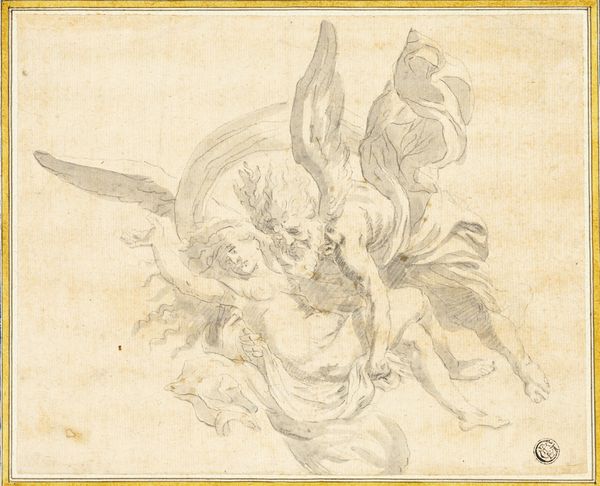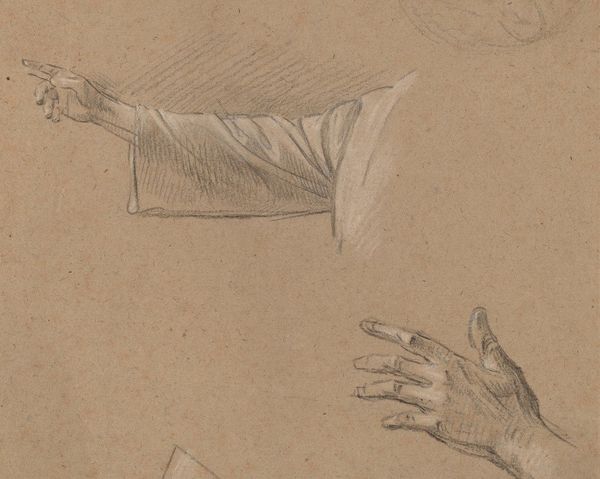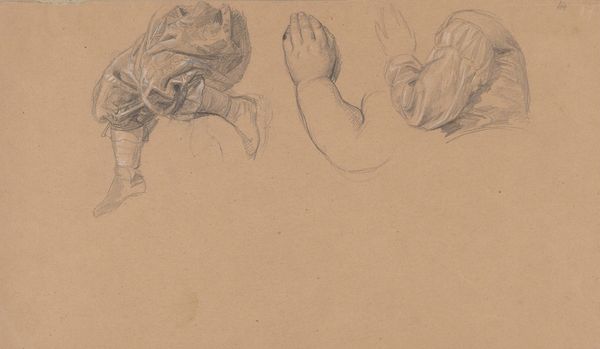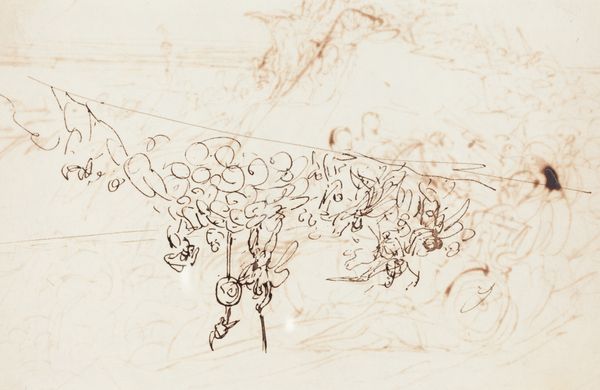
drawing, pencil, charcoal
#
drawing
#
pencil sketch
#
charcoal drawing
#
figuration
#
11_renaissance
#
pencil
#
charcoal
#
italian-renaissance
#
nude
Copyright: Public Domain: Artvee
Jacopo Tintoretto made these chalk "Studies of a Statuette of Atlas" in Venice, sometime in the mid-to-late 16th century. During the Renaissance, the rediscovery of classical antiquity deeply impacted artistic training. This drawing exemplifies the period's academic approach, where artists studied sculpture to master human anatomy and form. Atlas, a figure from Greek mythology condemned to hold up the heavens, became a symbol of endurance and strength. In Venice, a powerful maritime republic, this imagery resonated with the city's self-image as a steadfast power. Artists like Tintoretto, supported by wealthy patrons and the Church, contributed to a visual culture that reinforced Venice's social and political hierarchies. By examining drawings like this, alongside contracts, inventories, and period writings, we can reveal the complex interplay between artistic practice and social power in Renaissance Venice.
Comments
No comments
Be the first to comment and join the conversation on the ultimate creative platform.


